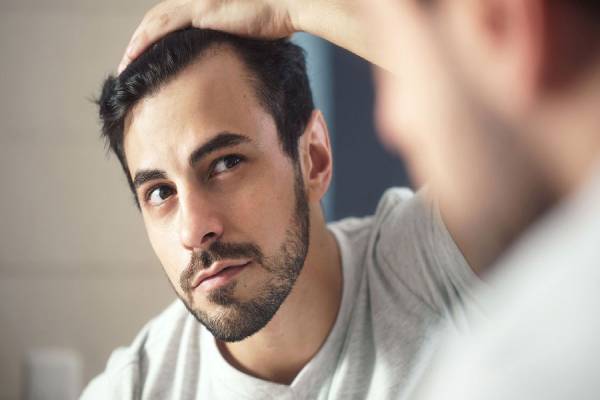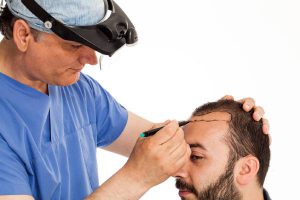Table of Contents
Looking to improve the thinning or balding areas of your scalp?
If so, a hair transplant may be right for you. A hair transplant is a procedure in which healthy hair follicles are harvested from one area of the scalp and transplanted to fill in areas suffering from hair loss. Once the hairs are transplanted, they’ll continue to grow and won’t ever again be impacted by hair loss. Hair transplantation surgery is proven to be effective, producing highly successful results. On average, the success rate of the transplanted follicular units, or grafts, is very high at about 99%. However, to reap these positive results, one must first understand the pros and cons of hair transplants. For many people, hair is one of the most important facets of their personality. Modern lifestyle and stressful work schedules, however, have left people at crossroads between their health and wealth. Lack of proper nutrition and stress are some of the most common causes of hair loss, which has become a global health concern in both men and women. Hair loss can also be caused due to factors like genetics, medications, hormonal changes, etc. All these factors can individually, or in conjunction with each other, lead to either temporary or permanent hair loss. After a hair transplant, applicants may feel a little pain in areas of the scalp that have been harvested and hair transplanted and may want to use several medications.

Some of these medications include:
- Painkillers
- Antibiotics – to reduce the risk of infection
- Anti-inflammatory drugs – to reduce swelling
Most people can return to work a few days after hair transplantation. Hair loss for two to three weeks after surgery is completely normal will cause new hair to grow. 8 to 12 months after hair transplantation, most people notice new hairs grow. To improve hair growth, some physicians may prescribe hair growth medications such as minoxidil that help reduce and prevent future hair loss. The natural and subtle results of hair transplants are obtained through highly developed techniques and years of experience. Our consultants at Moj Aramesh Amitis Health Tourism Company will help you choose the best physician to get the ideal result. When executed properly, the results are miraculous. The transplanted hairs blend seamlessly into your other healthy hairs, forming a completely natural look. No one will know about your hair transplant but you. After your recovery time has passed, the transplanted hair doesn’t require any specialized treatment. Meaning, you can cut, brush, style, color, and use any kind of shampoo, conditioner, or hair product. This is a large benefit as you can treat your transplanted hairs just like any other hair on your head—for the rest of your life.
Change Your Lifestyle and Prevent Hair Loss
Since stress and anxiety are effective factors in hair loss in some people, hair loss can be controlled by finding ways to reduce stress.
Factors such as regular exercise, having a nutritious and proper diet, and spending time to reduce stress can help people eliminate hair loss.
Disadvantages of Hair Transplantation
To learn more about hair transplantation, read on to learn about the different disadvantages of this procedure.
- Because hair transplantation is an important procedure, there are advantages and disadvantages to this procedure. Some people may get an unfavorable result from this method that they never expected. If the doctor has poor planning or the surgery is performed by amateur surgeons or unauthorized doctors, the result is likely to cause hair damage. The first thing that needs to be addressed is the harvesting and extraction process. Knowing how much hair can be taken from the donor site is a case that an experienced physician is specialized in.
- The whole hair transplantation procedure is quite durable, for the whole procedure to be completely done it takes around 3-4 months which is a long waiting period. This includes the duration from the beginning of the job when the applicant visits the doctor to perform the necessary tests as well as the procedures before the natural hair transplant to finally the post-hair transplantation measures.
- The overall cost of FUE or FUT depends on the total number of hair grafts or hair follicles a person requires. Therefore, the cost may vary from person to person. From the choice of doctor to the choice of method of hair transplantation, a lot of factors add to the total cost of hair transplantation. The fee structure of hair transplantation is quite expensive compared to other hair loss treatments. Hair transplantation demands a lot of expenditure starting from the very beginning and even after the surgery ends. Hence, getting hair transplantation is not affordable for everyone. Therefore, hair transplantation is not affordable for everyone. But in general, if you’re spending a lot of money on hair loss medicine, it may not make much difference to you.
- Another downside of hair transplantation is that many side effects run parallel during the treatment. Like itching, pain, numbness, non-acceptance of a foreign tissue, etc. One has to be very careful while selecting a surgeon, as there are high chances that one might fall prey in the wrong hands and the whole treatment can get botched up. Hence, when you are planning to spend so much money on hair transplantation, do make sure to research for a renowned hair transplant surgeon. Our expert consultant team at The Moj Aramesh Amitis Health Tourism Company will help you choose the best surgeon according to your budget and desired result.
Hair Transplantation and Laser Therapy
If you are concerned about the high cost of hair transplantation, we will introduce you to some other ways to treat baldness or hair loss:
For people with linear hair loss, hair transplants can be a good choice to fill in the hairline, but it should be noted that this may be costly. There are other methods other than hair transplantation that can be used to improve bald or thin areas of the scalp, one of which is laser therapy. In laser therapy, using a red light with a wavelength of 660 nm will increase hair growth in some people and reduce male pattern baldness.

Probable Complications of Hair Transplantation
The complications of hair transplantation are usually minor and will be resolved after a few weeks, including:
- Bleeding in harvested or transplanted area
- Infection
- Swelling of the scalp
- Bruising around the eyes
- Itching of the scalp
- Curst formation on areas where hair has been taken or implanted
- Numbness in areas of the scalp where hair has been removed or transplanted
- Inflammation or infection of the hair follicles – called folliculitis
- Sudden but temporary hair loss
- Abnormal looking tufts of hair
Hair transplantation is a relatively safe surgery and is associated with very few complications. Every hair transplantation surgeon should be aware of possible complications and techniques for the prevention and techniques of their management, However, in some cases, even if the hair transplant procedure is successful, you may experience some side effects, which include the following:
- Infection or bleeding: Hair transplantation is performed via extracting several incisions and holes in the scalp, which can increase the risk of infection or excessive scalp bleeding.
- Scarring: There is a risk of scarring in the extracted sites and transplant areas. In the FUT procedure, due to the removal of a strip strand of the scalp, a linear scar remains, which may be covered and hidden by the scars with the growth of new hair and increased hair density.
- However, scarring may be visible with excessive haircuts. In the FUE method, due to the removal of hair follicles using punching tools, scarring may be created, which is less visible than the previous method. In some cases, a person may notice bumps around the implanted hair that these bumps will fade as the hair grows back.
- Pain and swelling: Some people may experience some pain after the scalp heals, which can be treated with painkillers, according to a specialist. Also, with the improvement of the skin after the operation, some swelling in the head and face is completely normal.
How long does hair transplantation last?
In most cases, after hair transplantation, hair appears thicker, while sometimes there may still be hair loss and thin hair after recovering, causing an abnormal appearance or a piece of hair. People may need a follow-up transplant to increase the durability of hair transplants and achieve long-lasting results. To get the best results from hair transplants, you should follow the post-transplant instructions well to increase the chances of success in hair transplants. Therefore, a person who has a hair transplant should avoid heavy exercise for a few weeks and may need to avoid washing their hair for a few days.
Disadvantages of Hair Transplantation in Iran
A very important issue with hair transplants is that the person who intends to have a hair transplant must be in good general health. If a person suffers from hereditary hair loss and has a hair transplant at a young age, such as in their 20s or 30s, must continue hair loss treatment after the transplant. The success of hair transplantation depends largely on the area from which the transplanted hair is harvested. Another disadvantage of hair transplants is that they take a long time to heal and complete recovery takes about 8 to 10 months. But you can complete the hair transplant operation in Iran by benefiting from the abilities of a skilled doctor.




